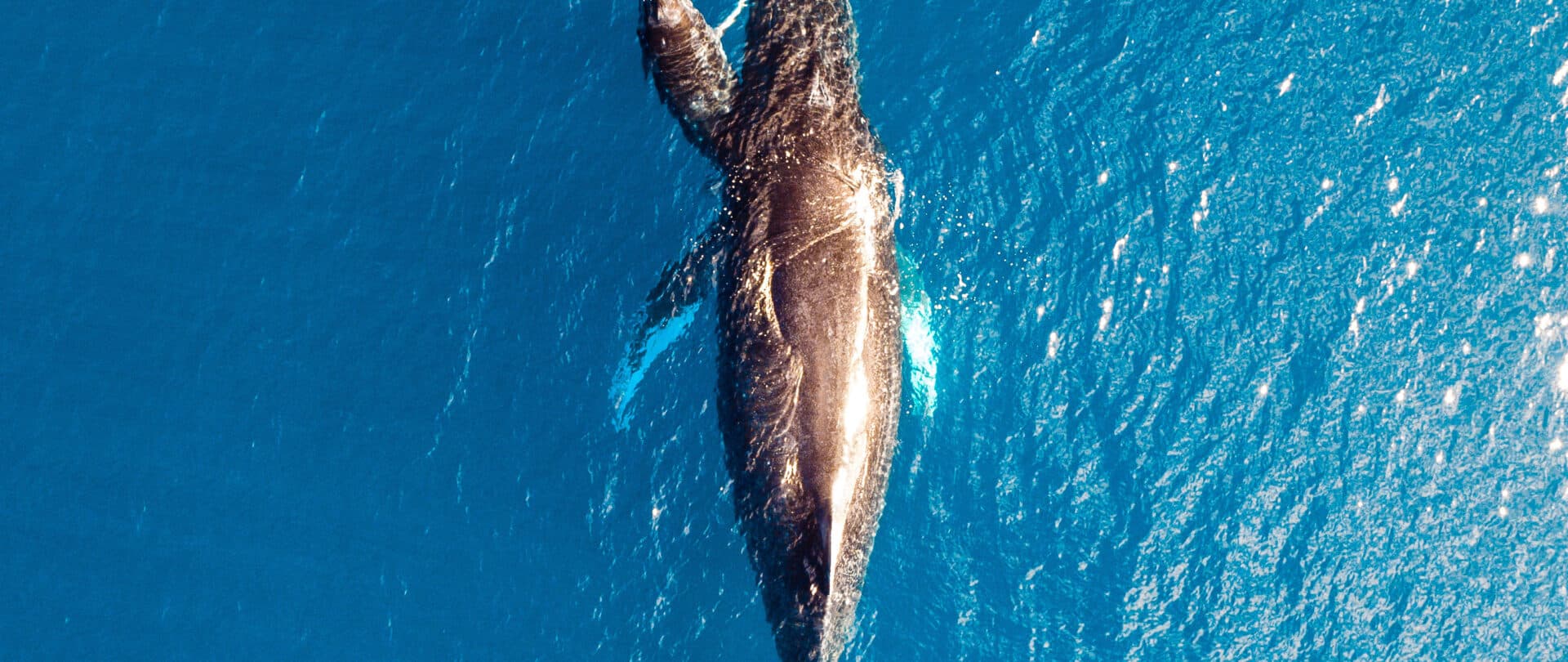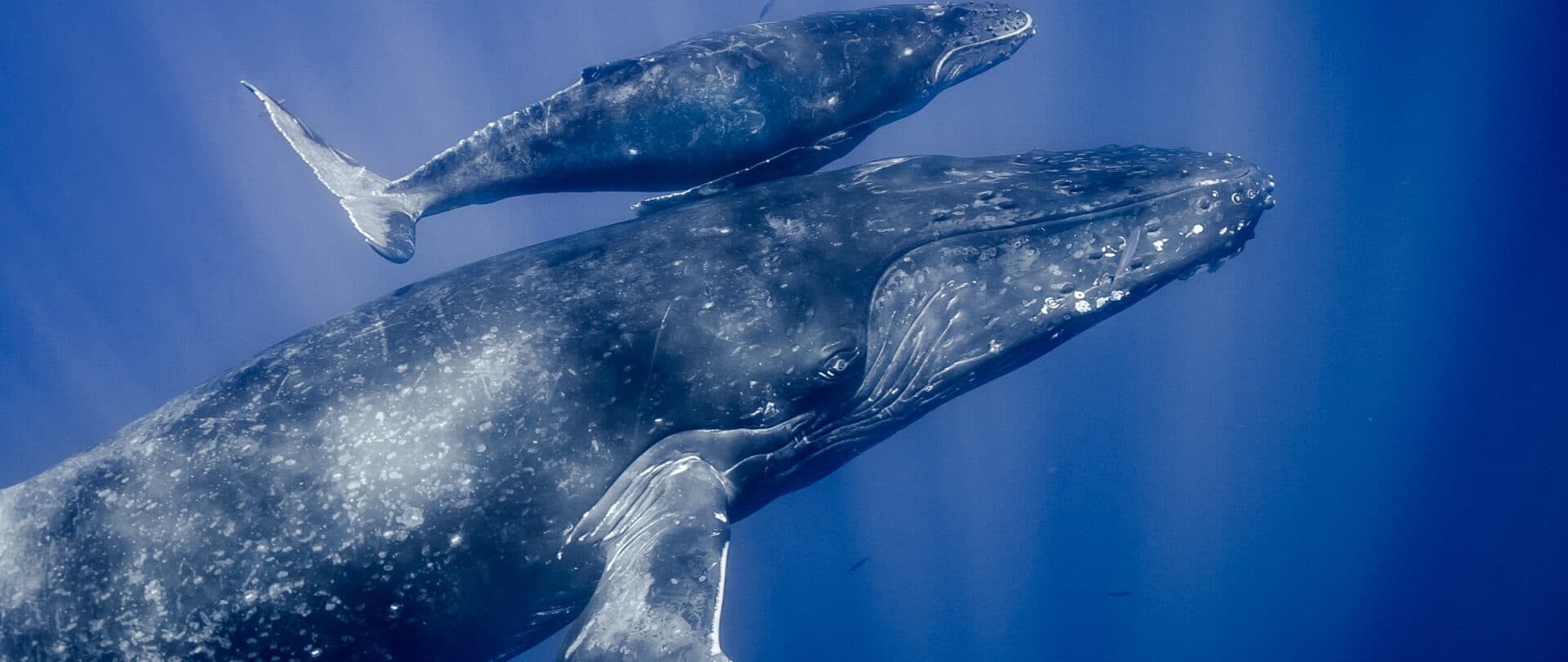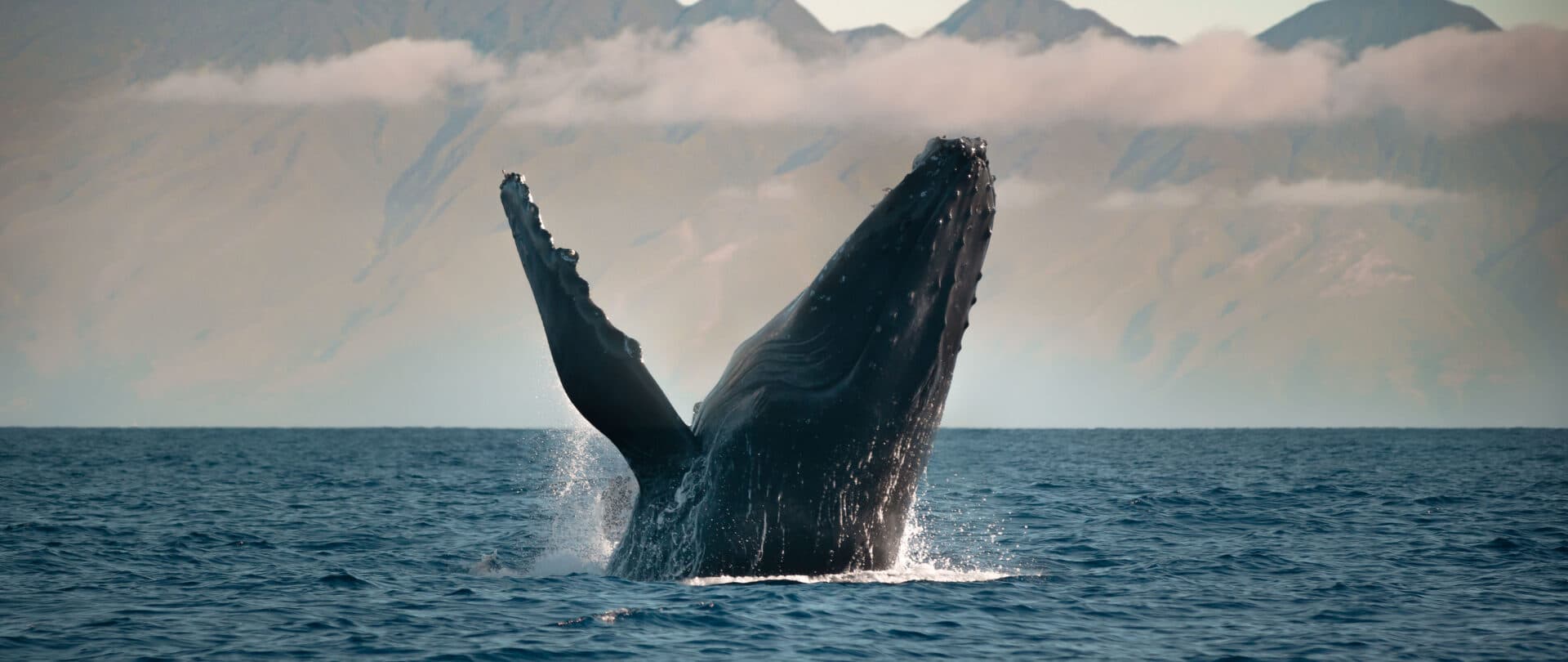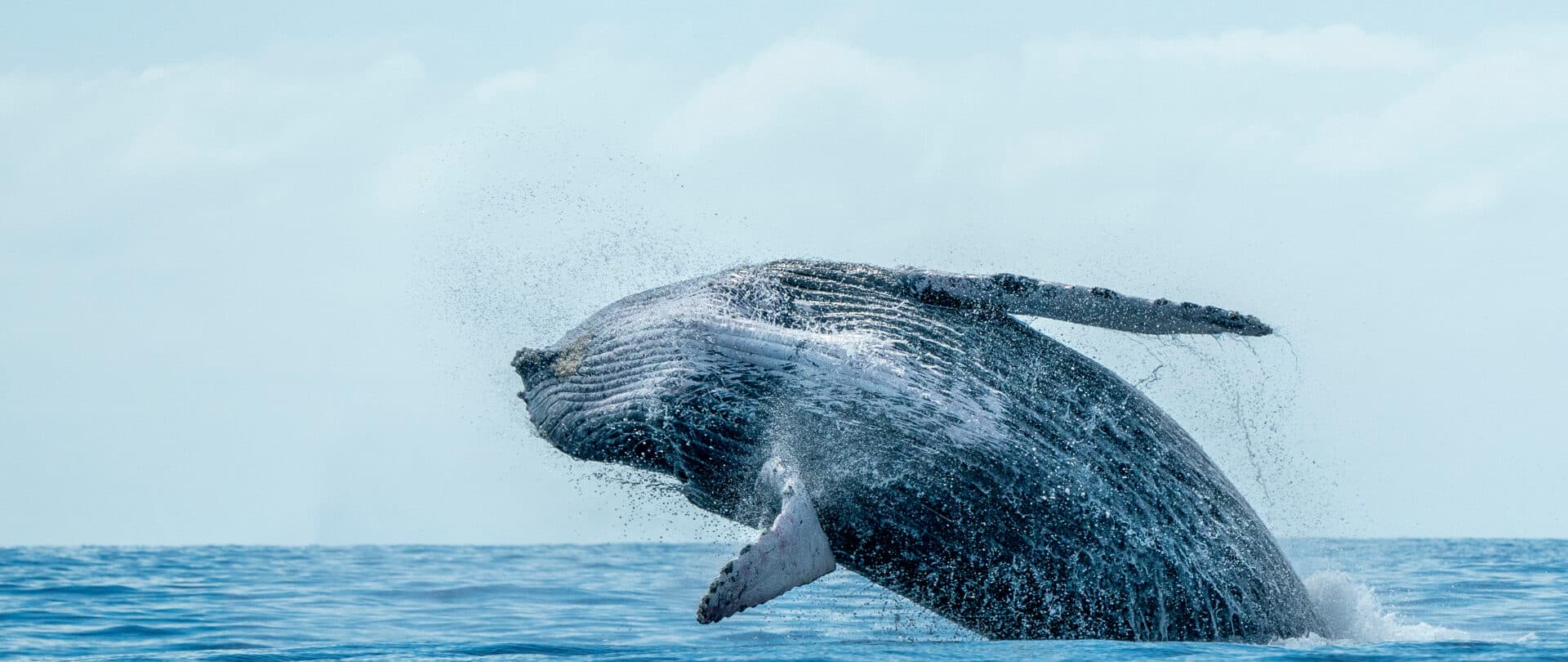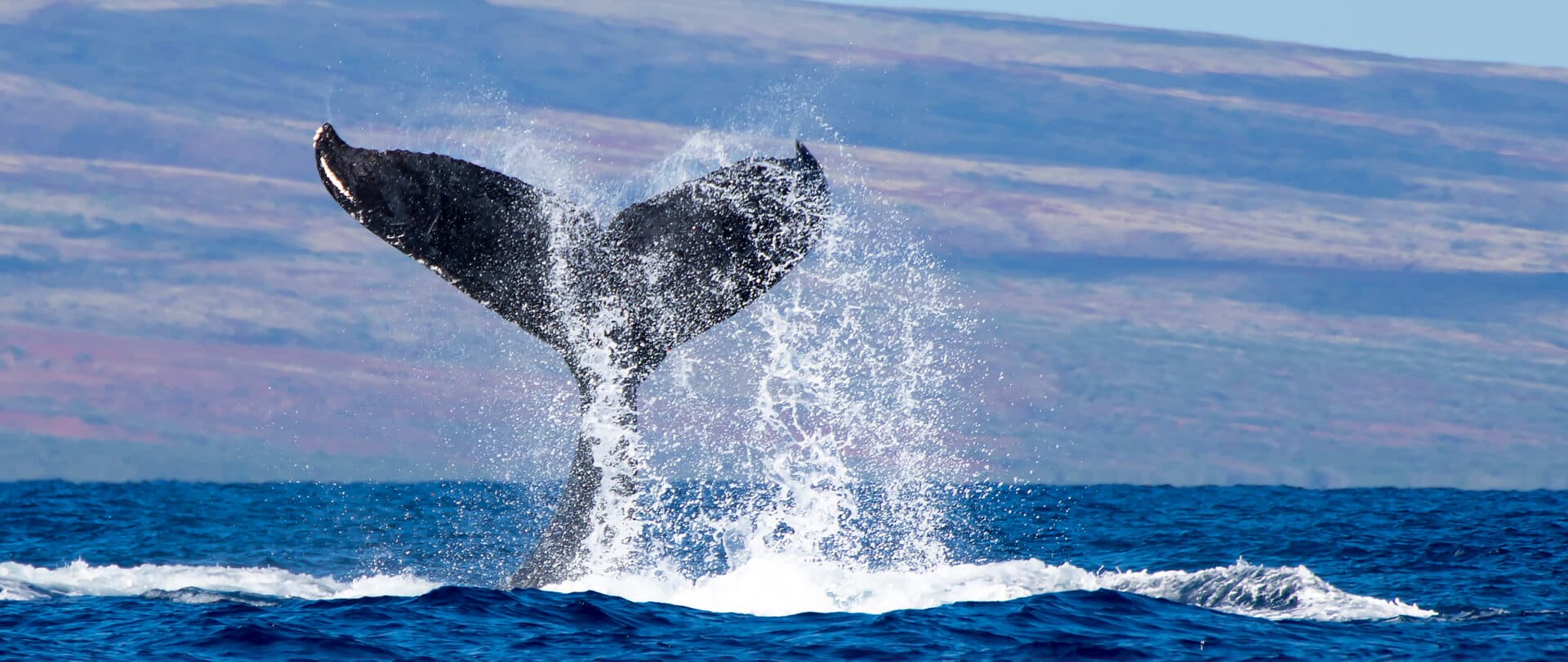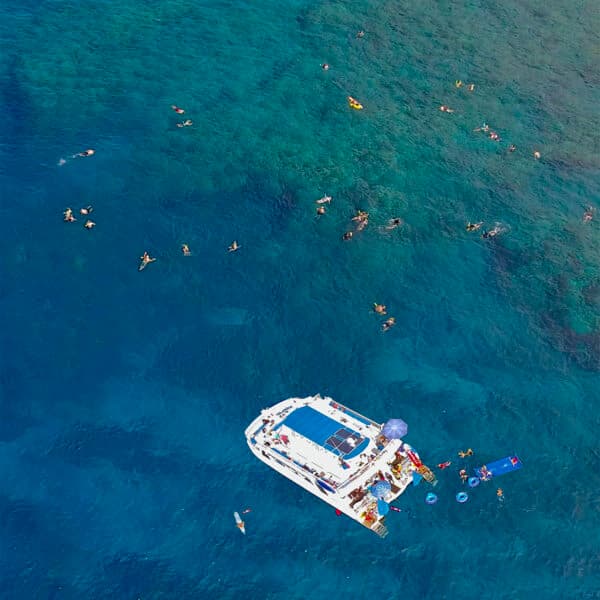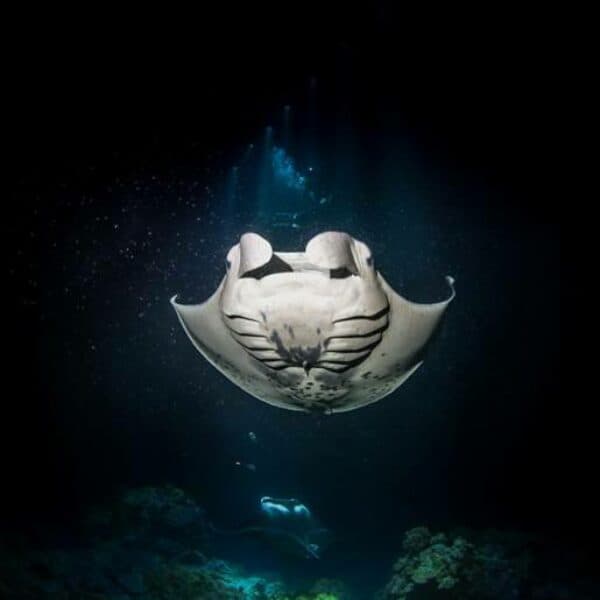Songs of the Sea
In the Presence of Giants
BY Andrew Walsh
The whales are back, soul sayers from the deep, believed to have evolved and survived over 40 to 50 million years. They are the transporters of great mystery, having traveled places and spanned time that dwarfs the more limited experience of mainly terrestrial humans, whose ancestors only go back some six million years. And, humpbacks are living for the moment in their winter playground, the waters of the Hawaiian Islands, where they also breed and birth their calves.
After all the millennia that have brought them here, humpback whales (Megaptera novaeangliae) have an amazingly fresh approach to life. They are none the worse for wear after an approximately three thousand mile migration (requiring an equally long return trip) departing from the freezing waters surrounding Alaska. Theirs is one of the longest migrations among wildlife. Once in warmer waters, they are ready to frolic, mothers with their calves, individuals in sole performance with leaps and rotations, ready to display their acrobatic agility. Gigantic in size, they appear to be as limber and buoyant as smaller creatures. Indeed, the impressive arch of their backs exaggerated when they are preparing for a deep dive earned them the name, humpback.
They have a varied repertoire of performance moves. The fluke (tail) moves are a major attraction. Lobtailing is a common behavior as the whales raise their tails out of the ocean only to give the water a hard slap, and make their signature splash. When the whales slap their tails repeatedly, it seems they are doing more than demonstrating their acrobatic prowess. Scientists have come to believe that they might be engaging in a type of whale tail Morse code in which the slapping sound is a form of communication to other whales.
Emily Boring, who participated in a research voyage with the National Oceanic and Atmospheric Association (NOAA), writes lyrically about witnessing the spectacle of the tail: “Slap, splash! it pounds over and over again in hypnotizing rhythm. We watch until long after sunset. No one moves. No one speaks. The whale never stops. The tail is still slapping as the humpback slides through fingers of fog, into darkness and out of sight.” She observes, “Something about the action was powerful enough to arrest twelve scientists in silent awe.”
Researchers from the Whale Trust Maui were able to capture on video a rare display of a humpback tail-sailing, a behavior more typical among right whales. The female humpback was observed several times snout down and tail sticking out of the water for an extended period of time, for roughly 10 minutes, as if maintaining the whale’s version of upside down standing posture.
It is impressive enough that the marine animal can manipulate an appendage in a spectacular way. Considering that the fluke can measure up to 18 feet wide, lobtailing is comparable to lifting and waving a small boat. However, fluke ability offers us a small glimpse into the fuller body maneuvers of the marine giant.
Authoritative researcher Hal Whitehead studied breaching, the movement the whale makes when it hurls a large part of its body out of the water. Hal describes a true breach in the following fashion, “In a true breach the animal emerges from the water on its side, twist with flailing flippers and lands on its back,” this form of breaching taking place about “80% of the time;” other times, the form resembles more of a “belly flop.”
A breaching whale is so awe-inspiring as the creature seems to accomplish the impossible, doing something the whale body does not seem designed to do. The rotund whale shape resembles a blimp and much less a highly maneuverable fighter jet. A breach for a 25 to 40 ton whale represents extremely heavy lifting, especially if one compares the size to an African elephant that weighs between two and seven tons. As it turns out, the humpback’s body is perfectly designed for propelling itself, and so are the bumps (tubercles) along the outer edge of its fins that once seemed irrelevant and now are thought to be naturally engineered for air flow. A company by the name of WhalePower adapted the “bumpy” design for wind turbines and found the giant fans could operate more efficiently with less drag. Reflecting the inspiration from the whale, the company named the new blade technology, Tubercle Technology.
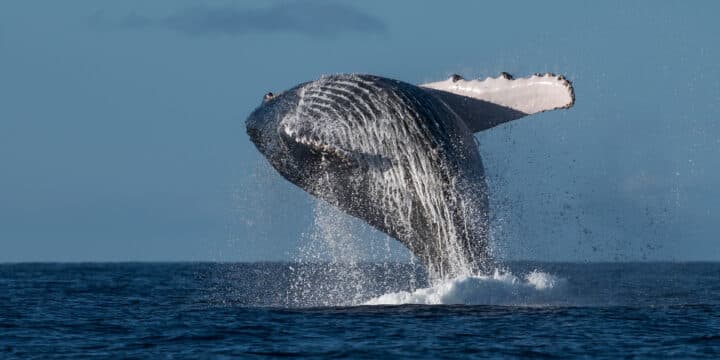
Among the mysterious unknowns of the humpback is why the males sing. Around 1967, biologist Roger Searle Payne discovered that the whale sounds, in a recording given to him, were much more than random noises emitted by body functions; he found that the sounds actually had sequences and set themes that repeated themselves, that is, they constituted what we know as song. Along with fellow researcher Scott McVay, Payne made new recordings, carried out experiments using spectrograms to detail the patterns created by song and eventually brought sound tracks and their theories to public attention.
Payne introduced the singer Judy Collins to whale songs, which she, in turn, utilized as background music to her song, “Farewell to Tarwathie,” a brilliant composition that juxtaposed a ballad about whalers leaving their homes to join the whale hunt against the plaintive and haunting sounds and cries of whales. It’s hard not to get teary and emotional listening to her beautiful rendition: www.youtube.com/watch?v=qV29xK2xyZ4. In this, Collins almost imperceptibly shifted the narrative from whale hunting to whale mystique. As the whale song entered the sensibilities of the mammal’s defenders, the conservation movement gained steam and culminated in the Endangered Species Act in late 1973 that protected whales in U.S. waters and a world backlash against hunting whales.
Dr. Jim Darling, co-founder Whale Trust Maui, has studied whale songs since the late 1970s, even initially recording songs in Hawai‘i for Payne. Research has yielded insight into the context of the song. Jim says that we know “who sings,” “the adult males,” and “who they sing to,” “other adult males.” Research clearly indicates other adult males hear the song and adopt the song, or part of it, as their own. By the end of their time in Hawai‘i, adult males will be singing close to the same song. Furthermore, Jim has conducted research on four whale populations in Mexico, Hawai‘i, Japan and the Philippines studying their songs over three years to discover “shared phrases” and “shared parts” among distant whale communities.
The songs constantly change resulting in what the researcher describes as “year to year variability in how similar songs were.” For example, in one year the song was “virtually identical” among whales across the entire North Pacific. There seems to be “no other explanation of sharing complex song unless the animals interact,” according to Jim. That statement, in and of itself, shows us how far whale research has come in a relatively short period, from the study of isolated caracasses washed up on shore or hunted in the 1960s to the study of living whales interacting with each other and with us.
Whereas whale researchers used to compare their science to astronomy, the subjects being so distant, suddenly the stars started to align and whale research began to yield some of the secrets of this heretofore inscrutable species. The first brave divers got into the water with the giants not knowing what to expect from their behavior, so little was known at the time. The humpbacks proved accommodative to closer inspection. The big change in the science in recent years has come from the development of new technologies, especially as of late, drone technology, which offers the bird’s eye view and is especially effective in the often pellucid waters of Hawai‘i. For example, the birth of calves has never been photographed. However, a drone nearly captured the miracle of a new humpback life when researchers noticed movement and blood in the water and called in a drone to capture the scene. With humpbacks being so alive to our experience and imagination, the prospects for their survival have improved. Unfortunately, whale researchers confirm the oceans are changing in ways we do not yet understand, and that it is difficult to forecast the future for humpbacks and other sea life. It still remains important for us to take inspiration from the whale song.
Features

See + Do
Historical Dinner Cruise to Kealakekua Bay
Kona Coast

See + Do
Deluxe Snorkel & Dolphin Watch
Kona Coast
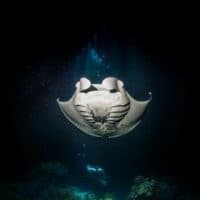
See + Do
Manta Ray Night Snorkel Tour
Kona Coast

See + Do
